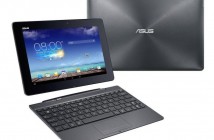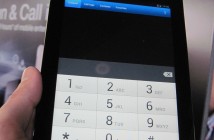HP isn’t the most successful company when it comes to tablets and smartphones, which is puzzling seeing as they’re one of the top manufacturers of laptops and desktop computers (both business and consumer), as well as a vast array of computing equipment. Moreover, they have a pretty good line of Windows tablets, and their convertible laptop-tablet hybrids have been selling very well when they were in vogue just a few years ago.
HP’s failure to adapt to the new mobile consumer market can be attributed in part to their stuck-up attitude – they’re control freaks who want to control as much of the hardware and software as possible, which is a source of grievance for a lot of business users, and is the reason why they acquired Palm (and all of its assets, including WebOS) for $1.2 billion in order to enter the tablet and smartphone market.

That was a spectacular failure, but it seems that HP extracted an important lesson out of it – go with the flow and sell something cheap but high quality. Their newest consumer tablet seems to fit that perfectly – the HP Slate 7 is a beautiful device with a light price tag, which is mostly because of its somewhat ancient hardware.
Design
Let’s talk about the good things first – the Slate7 is a very nice device when it comes to design and build quality. HP has been particularly good at making high quality devices for the past couple of years (after half a decade of uninspiring products), and thankfully they didn’t drop the ball on this one, either. The Slate 7 has a metal frame, a strong Gorilla glass sheet on the front and a soft-touch metallic grey or red finish on the back, with a chrome HP logo.
It looks AND feels really good – not what you’d usually expect from an entry level device. I’d say the Slate 7 reminds most of HP’s Envy line of laptops and Ultrabooks (including the latest Envy X2 hybrid), and if you liked those, you’ll really like this tablet. The few buttons around the device also feel well made – I can’t see them breaking anytime soon.
Hardware features and performance
While HP deserves some kudos for the external finish, the internal hardware may leave a bit to be desired. I actually understand HP’s strategy – they’re making an affordable device that looks great and works just well enough to be useful – if you’re an average tablet user that just wants it to watch some movies, see some photos and browse the Web sitting on the couch, the Slate7 is perfect.
Heck, it’s great even on an office desk as a clock or personal calendar, but if you’re a more advanced user it is definitely not enough. First of all, the display uses probably the cheapest panel HP could find that still looked somewhat decent – at 7.0 inches, it uses the good old 1024×600 resolution that wasn’t that good even when the first generation of Android tablets went on sale. Sure, it uses HFFS technology to improve the viewing angles, contrast and brightness, but it’s barely comparable to the standard 1280×800 IPS LCD that is on pretty much every other tablet. It is pretty good if you only compare it to the first Kindle Fire, though – and that seems to be the main competitor to the Slate 7, along with the Nexus 7.
The processing power is provided by an as-of-yet unidentified dual core ARM Cortex A9 processor (my guess is it’s a Snapdragon or Exynos) running at 1.6 GHz – that’s enough to run most of the current apps and games, but it may be a bit slow in the future. The graphics adapter is also unknown, but seeing as it’s a 1.6 GHz chip, it should be paired with a pretty good GPU, and at this resolution, any midrange solution will suffice. The 1 GB of RAM is also good enough, but does not inspire any confidence for the future, however the storage space should be enough for anyone – there are 8 GB of memory onboard the device and a micro SD card slot should you wish to expand.
The remaining specs are sparse and pretty outdated, too. The Slate 7 has two cameras, a 3.15 Megapixels unit on the back that lacks an LED flash but has support for 720p video recording, and a 0.3 Megapixels camera on the front that is mainly for video chat and taking quick snapshots. The usual suite of sensors is there, including a gyroscope, accelerometer, magnetometer and light sensors, but the only communication capabilities are Wifi and Bluetooth – there’s no 3G, GPS, HDMI or NFC here.
The battery is probably the worst part – with all the cuts in hardware, you still get a measly 5 hour lifetime – at the very least, HP could’ve used a normal battery that would last around 8 hours or more.
Technical specifications
| Specifications | HP Slate 7 |
|---|---|
| Display | 7.0 inches, 1024×600 pixels, HFFS TFT LCD, 170 PPI pixel density |
| Processor | ARM Cortex A9, 1.6 GHz, dual core |
| RAM | 1024 MB |
| Storage Space | 8 GB onboard storage space, micro SD card slot (up to 32 GB cards supported) |
| Camera(s) | Rear – 3.15 Megapixels camera with support for 720p video recording; Front – 0.3 Megapixels (VGA) camera |
| Connectivity Options | Wifi N, Bluetooth 3.0, micro USB |
| Sensors | Gyroscope, accelerometer, light and magnetometer sensors |
| Battery | Li-Ion, non-removable, up to 5 hours of continuous use |
| Dimensions and weight | 197.1 x 116.1 x 10.7 mm, 372 grams |
| Operating System and Software | Android 4.1.1 Jelly Bean |
Software
The HP Slate 7 comes with Android 4.1.1 Jelly Bean pre-installed, and there are no interface customizations to speak of. Seeing as the Touchpad was so easy to hack and install Android (and other operating systems) onto, the Slate 7 could be a good candidate for developers and the modding community, as well. The normal Android OS also compares well to Amazon’s restricted version on the Kindle Fire – you can do much more with the Slate 7 software wise.
Price and Availability
The only thing making the Slate 7 worthy of some attention are the nice design and most importantly, the price – you’ll be able to get this tablet for only $169, just $10 more than the original Kindle Fire. It’s actually not a bad deal, and for some reason, I think that HP will lower the price even further. Why HP would release an entry level tablet is a mystery, but they already have the corporate and high end niches covered, so maybe they’re testing waters for a more capable mainstream Android device – I hope that’s the case.


